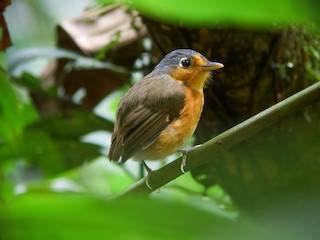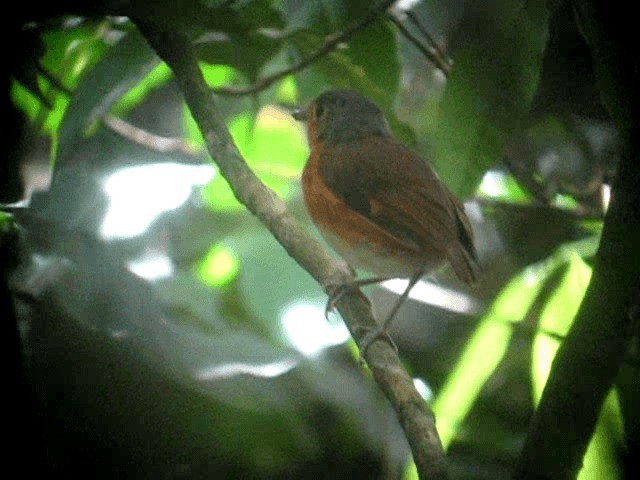Sucre Antpitta Grallaricula cumanensis Scientific name definitions
Revision Notes
Sign in to see your badges
Species names in all available languages
| Language | Common name |
|---|---|
| Bulgarian | Парианска мраволовкова пита |
| Catalan | xanca menuda de Sucre |
| Croatian | narančastotrbi mravar |
| Dutch | Sucredwergmierpitta |
| English | Sucre Antpitta |
| English (United States) | Sucre Antpitta |
| Finnish | cumanacoanluuranen |
| French | Grallaire de Cumana |
| French (Canada) | Grallaire de Cumana |
| German | Sucreameisenpitta |
| Japanese | スクレヒメジアリドリ |
| Norwegian | gråkronemaurpitta |
| Polish | drobik białobrzuchy |
| Russian | Венесуэльская питтуля |
| Serbian | Venecuelanska sivočela mravlja pita |
| Slovak | húštinárik venezuelský |
| Spanish | Ponchito de Sucre |
| Spanish (Spain) | Ponchito de Sucre |
| Spanish (Venezuela) | Ponchito de Paria |
| Swedish | sucremyrpitta |
| Turkish | Sukre Yerçavuşu |
| Ukrainian | Понгіто венесуельський |
Revision Notes
Harold F. Greeney revised the account. Guy M. Kirwan contributed to the Systematics page. Peter F. D. Boesman contributed to the Sounds and Vocal Behavior page. Claire Walter copy edited the account.
Grallaricula cumanensis Hartert, 1900
Definitions
- GRALLARICULA
- cumanensis
The Key to Scientific Names
Legend Overview
Introduction
Until 1990s, the Sucre Antpitta was universally treated as a subspecies of the wide-ranging Slate-crowned Antpitta (Grallaricula nana). It wasn't until 2013, however, that it was formally treated as a separate species, largely based on a morphological and vocal study which emphasized the strong geographical variation evident within the Slate-crowned Antpitta species complex. The Sucre Antpitta is endemic to northeastern Venezuela in the region of the Paria Peninsula, where it is the only species of Grallaricula antpitta, which should facilitate identification for those observers fortunate enough to encounter the species. The plumage is largely rufous-red below and dark brown above, with a slate-gray crown and nape, but getting a good view of these small antpittas is often a matter of considerable fortune. The species inhabits the undergrowth of humid forest above 700 m elevation, and is almost certainly already threatened with extinction; it is currently afforded Vulnerable status. The eggs of the Sucre Antpitta were described more than 45 years ago, but this remains the only published information on its reproductive habits. Its nest remains undescribed.

- Year-round
- Migration
- Breeding
- Non-Breeding












































